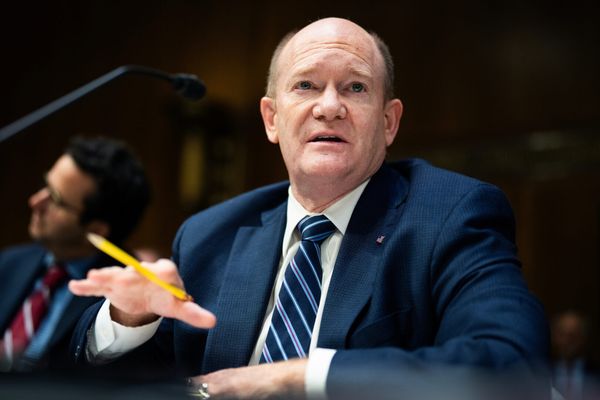Americans at risk of losing their Medicaid government health coverage because of new work requirements signed into law by the Trump administration should find employment on U.S. farms, according to Secretary of Agriculture Brooke Rollins.
“We have way too many people that are taking government program that are able to work,” Rollins said in an interview on Fox Business on Tuesday. “This is not children. These are not disabled [people]. These are not senior citizens. These are able-bodied Americans who are taking government handouts.”
In July, the Trump administration created new work requirements for Medicaid, a state-federal program providing healthcare to over 77 million mostly low-income people, as part of its One Big, Beautiful Bill spending package.
Under the new requirements, passed alongside sweeping tax cuts disproportionately benefitting the rich, able-bodied people on Medicaid are required to show they have completed 80 hours of work or community service per month to maintain their coverage, with limited exceptions for parents and caretakers with young children, pregnant people, and other groups.
The Congressional Budget Office, reviewing a draft version of the bill that passed the House, estimated the requirements would cause nearly 5 million people to lose coverage by 2034.
Rollins has suggested that Medicaid recipients should head to the fields in the past.
In July, in the face of concern that the administration’s mass deportations would decimate the country’s immigrant-heavy farm labor force, Rollins argued that “more automation” and a “100 percent American workforce” could make up the losses.
“There are 34 million able-bodied adults in our Medicaid program,” he said. “There are plenty of workers in America.”
The Congressional Budget Office found that there were about 34 million working-age, non-disabled Medicaid enrollees in 2024, though analysts suggest Rollins is overstating the degree to which participants in the health program are unemployed and skimming from the government.
An analysis from health policy group KFF found that there are about 26 million Medicaid-covered adults between the ages of 19 and 64 who don’t receive disability benefits, and that nearly two-thirds of this group were working either full or part-time.
Among the remaining portion, 12 percent said they were not working because they were caregiving, while 10 percent listed illness or disability and seven percent said school attendance kept them from working.
Another study, from University of Massachusetts Boston researchers, found that among able-bodied, unemployed Medicaid recipients, almost 80 percent are female, their average age is 41, and their median individual income is $0.
"It's clear based on their prior work history and family size/income that they are exceptionally poor and have likely left the workforce to care for adult children or older adults," researcher Jane Tavares told PolitiFact. "Even if these individuals could work, they would have very few job opportunities and it would come at the cost of the people they are providing care for."

Other analysts point to states like Arkansas that have tried to use work requirements to cut costs and drive employment.
The state, which attempted such requirements seven years ago, saw 18,000 people kicked off Medicaid rolls in the span of four months, yet saw no positive employment impact.
“There is not an epidemic of non-working able-bodied adults living high on Medicaid, despite such claims from the Trump administration,” Matt Bruenig, founder of the People’s Policy Project, a progressive think tank, argued in a May op-ed in The New York Times. “Medicaid work requirements are a solution to a problem that doesn’t exist.”
Among working-age Medicaid beneficiaries, about half are working, a quarter have a work-limiting disability, and an additional one-fifth will find employment or come off the program within 15 months, Bruenig said in the piece, leaving only about 6 percent of working-age Medicaid enrollees who probably can find work but haven’t done so.
Trump ‘pushing for all or nothing deal’ on Gaza as Netanyahu ‘wants full occupation’
Purdue University student freed from ICE detention after outcry from faith leaders
ICE arrests dropped in July amid backlash to raids and legal challenges
3 African nations have agreed to take deportees from the US. What we know about the secretive deals
Ghislaine Maxwell does not want grand jury transcripts released
Maine cop arrested by ICE transferred to second detention center, report says






